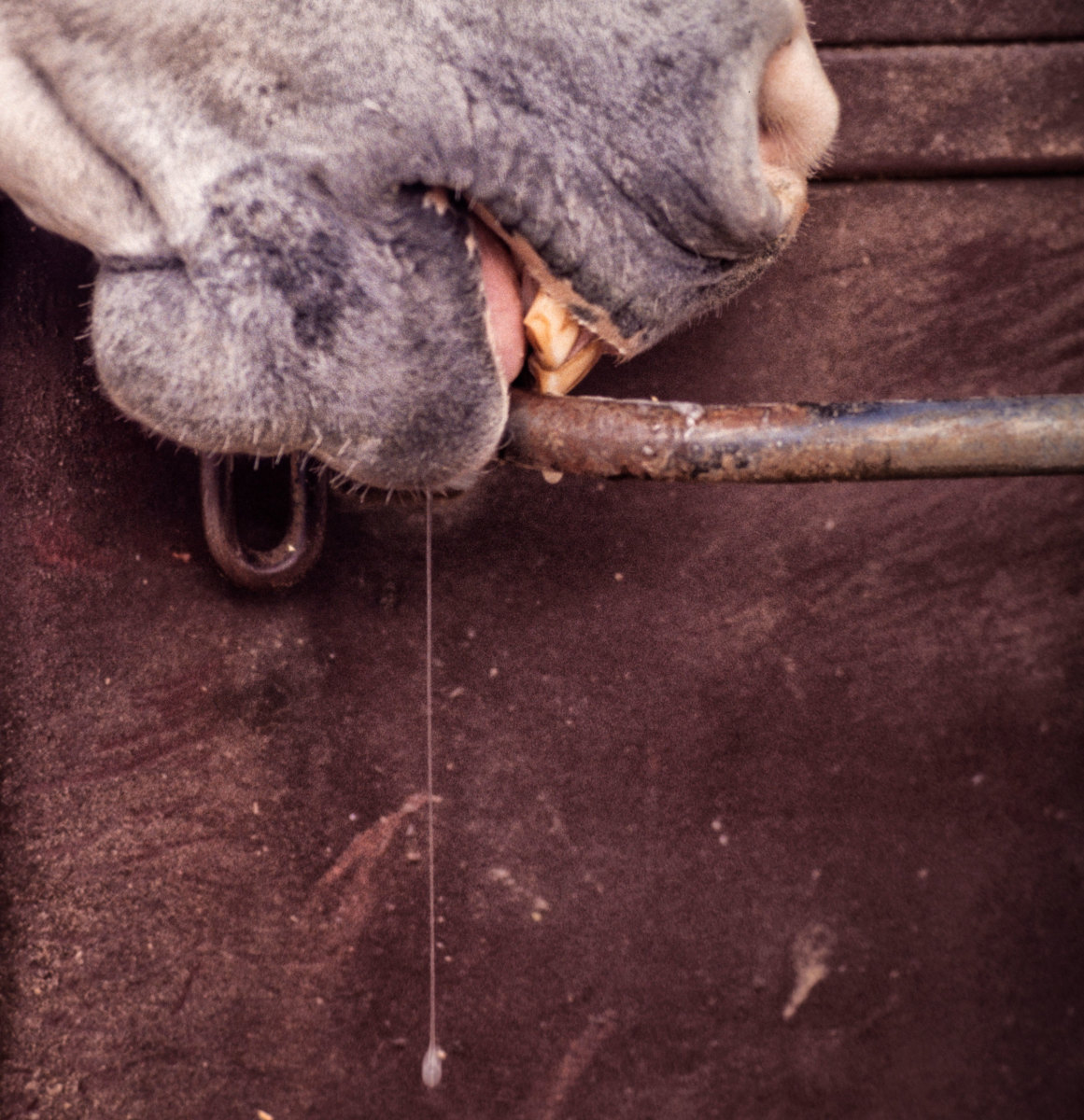
While saliva is 99% water, it also contains a multitude of compounds and enzymes that are available for analysis and might shed light on specific systemic medical conditions. Ease of collection makes it an attractive method of obtaining information for an acutely ill patient.
Serum SAA and cortisol are biomarkers used to assess inflammation in acute abdominal disease. A Spanish study looked at the practicality of using salivary analytes to find correlations with acute abdominal disease [Contreras-Aguilar, M.D.; Escribano, D.; et al. Changes in saliva analytes in equine acute abdominal disease: a sialochemistry approach. BMC Veterinary Research 2019, vol. 15:187; 10.1186/s12917-019-1933-6].
Salivary analytes—23 different substances—were compared between 20 healthy horses and 37 individuals with acute abdominal disease. Plasma was also obtained from all horses in the study. Seven salivary analytes significantly increased in horses with acute abdominal disease compared to the healthy horses: GGT, CK, urea, total bilirubin, total protein, phosphorus and SAA. The SIRS (systemic inflammatory response syndrome) score was applied to assess severity of each case of acute abdominal disease.
Prediction of acute abdominal disease was based on cut-off points in these analytes:
- GGT ≥ 82.7 IU/l
- CK ≥ 30.1 IU/l
- Urea ≥ 5.3 mmol/l
- Total bilirubin ≥ 4.4 umol/l
- Total protein ≥ 4.24 g/l
- Phosphorus ≥ 0.5 mmol/l
- SAA ≥ 23.3 IU/l
GGT and total bilirubin usually correlate with liver dysfunction, but specific gastrointestinal problems—cholelithiasis, infectious colitis, large colon displacement, ulcerative duodenitis, proximal enteritis and neoplasia—are associated with elevations of these parameters in serum as well as saliva.
Creatinine kinase (CK), generally associated with muscle damage, might be an indicator of ischemic injury with acute abdominal disease.
Urea elevations correlate with dehydration or GI tract bleeding.
Phosphorus has previously been used as a biomarker for disease severity and mortality in foals.
Phosphorus in saliva did not correlate with plasma concentrations but did correlate with SIRS scoring.
SAA in saliva agreed with other studies on horses with acute abdominal disease. In this study, SAA also correlated with the observed SIRS status.
Total protein, phosphorus and SAA had sensitivities higher than 70% and specificity of 100% in acute abdominal disease detection.
Use of salivary analytes has the potential to help in clinical diagnosis of acute abdominal crises.








